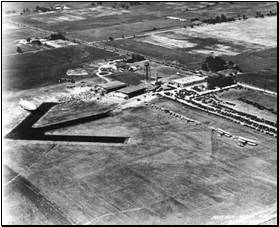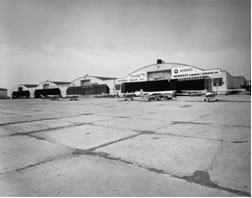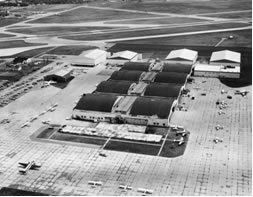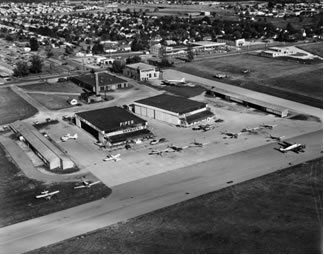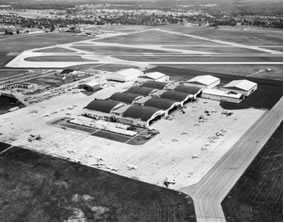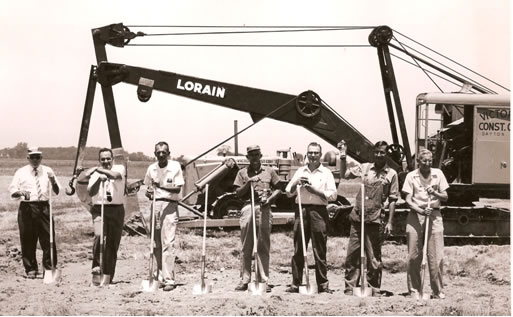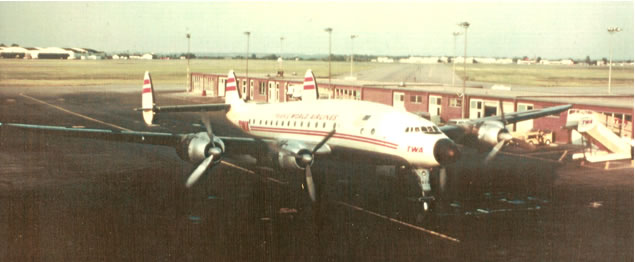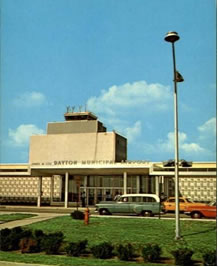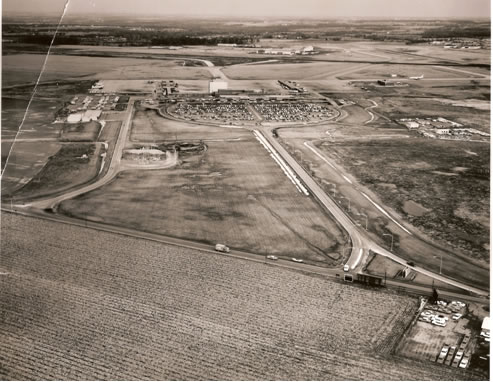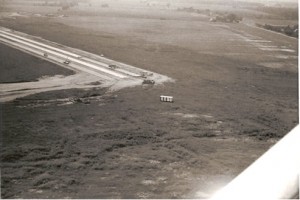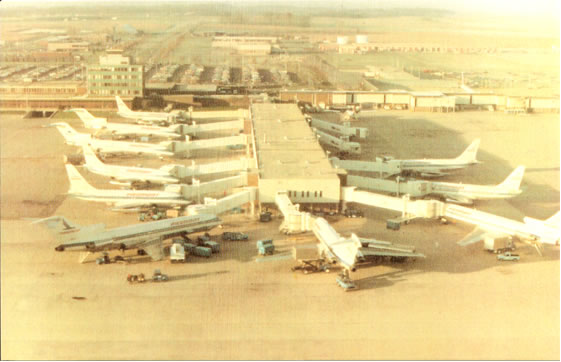Search departures
DAY Airport Facts
Airport Facts
FAA Identifier: | DAY | |
Lat/Long: | 39-54-08.5530N / 084-13-09.7504W | |
Elevation: | 1009 ft. / 307.5 m (surveyed) | |
Variation: | 04W (1990) | |
From city: | 9 miles N of DAYTON, OH | |
Time zone: | UTC -4 (UTC -5 during Standard Time) | |
Zip code: | 45377 |
Airport use: | Open to the public | |
Activation date: | 10/1937 | |
Sectional chart: | ||
Control tower: | Yes | |
ARTCC: | INDIANAPOLIS CENTER | |
FSS: | DAYTON FLIGHT SERVICE STATION | |
NOTAMs facility: | DAY (NOTAM-D service available) | |
Attendance: | CONTINUOUS | |
Wind indicator: | lighted | |
Segmented circle: | No | |
Lights: | SS-SR | |
Beacon: | white-green (lighted land airport) | |
Fire and rescue: | ARFF index C | |
Airline operations: | ARFF INDEX E AVBL WITH 24 HR NOTICE; CALL ARPT OPNS 937-454-8299. | |
International operations: | customs landing rights airport |
Runway | Dimensions | Surface |
Runway 6L/24R | 10901 x 150 ft. / 3322 x 46 m | asphalt/concrete/grooved, in good condition |
Runway 18/36 | 8502 x 150 ft. / 2591 x 46 m | asphalt/concrete/grooved, in good condition |
Runway 6R/24L | 7285 x 150 ft. / 2134 x 46 m | concrete/grooved, in good condition |
Ownership: | Publicly-owned | |
Owner: | CITY OF DAYTON, OHIO | |
Director: | Gilbert Turner |
- Dayton International Airport Terminal Master Plan Study
- Phase One Canopy Replacement Project- DAY Terminal Arch
- Phase One Canopy Replacement Project- DAY Terminal Electrical
- Phase One Canopy Replacement Project- DAY Terminal Floor Plan
- Phase One Canopy Replacement Project- DAY Terminal HVAC
- Phase One Canopy Replacement Project- DAY Terminal Plumbing
- Phase One Canopy Replacement Project- DAY Terminal Structural
- Phase One Canopy Replacement Project- Project Layout Plan Part 1
- Phase One Canopy Replacement Project- Project Layout Plan Part 2
Join us as we map out plans for future growth and economic development over the next 20 years. View the 2020 Master Plan
Airport History
Perhaps no other single spot on the globe has seen more aviation firsts than Dayton, Ohio. It all began when two brothers from Dayton, Orville and Wilbur Wright, began their search for the secrets of powered flight in 1896. On December 17, 1903, the Wright brothers successfully launched the world’s first man-carrying flying machine.
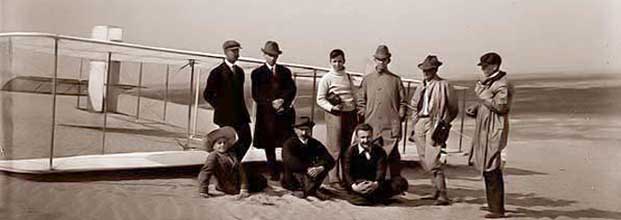
The brothers continued their success by the world’s first practical airplane, the Wright Flyer III that was first flown at Dayton’s “Huffman Prairie” in 1905.
Inspired by the Wright brothers and increased fascination with powered flight, several local businessmen, including E.G. Beichler, President of Frigidaire, Frederick B. Patterson, President of National Cash Register, Charles F. Kettering, Vice President of General Motors and President of the General Motors Research Group, formed “Dayton Airport, Inc.” in March 1928. The company acquired approximately 311 acres of property north of the City of Dayton near the town of Vandalia to build an airport.
By August 1928, the property was under transformation to establish a working private airport called the “Dayton Airport.” Once all improvements were complete, the Airport consisted of two 80′ by 120′ hangars, a brick office/machine shop building, a water tower, small brick power plant, Refiners Oil and Gasoline Station (a yellow Ivan Driggs Monoplane known as “The Bumble Bee” was attached to the roof), and three Macadam surfaced runways approximately 75′ wide and 500′ long that converged to point west. The total estimated capital cost to establish the Airport and its facilities was $187,300. The operation and management of the Airport was leased to the Airport’s first “Fixed Based Operator,” Johnson Flying Service, which was headed by Edward Albert (“Al”) Johnson. Johnson Flying Service paid Dayton Airport, Inc. $9,000 annually for the Airport operating rights granted under the lease.
On July 31 and August 1, 1929, a dedication ceremony and public open house was held for the Dayton Airport.
By 1932, interest in the Dayton Airport declined to an extent that Robert Ripley in one of his “Believe It or Not” cartoons reported that Dayton, the Birthplace of Aviation, had no Municipal Airport! The lack of interest was due to many factors. Key among them was a misconception about “flying machines” and the continuing financial impact of the Great Depression. Given financial difficulties and debts owed to creditors, Dayton Airport, Inc. fell into receivership and the fate of the Airport was questionable. After much negotiation, the City of Dayton leased the Airport in 1934 from the receiver for Dayton Airport, Inc. The terms of the lease included, among other things, the City’s payment of $250.00 per month, plus legal taxes and assessments. The agreement also included an option to purchase the Airport.
Given growing concerns that the Airport was unable to handle newer transcontinental aircraft, native Daytonian, James M. Cox, a three-term Ohio Governor, 1920 Democratic nominee for U.S. President (his running mate was Franklin D. Rosevelt, who became the 32nd U.S. President) and the owner and publisher of several newspapers, including the Dayton Daily News, became involved in addressing the fate of the Airport. Using political connections in Washington, D.C., James M. Cox received assurances that if the City of Dayton owned the Airport, the City would be eligible to receive U.S. Works Projects Administration funding for airport improvements. Accordingly, he quickly focused the Dayton community on fundraising efforts to acquire the Airport. On April 29, 1936, it was with great pride that Daytonians and the business community, including businesses from as far as Middletown, Piqua and Troy, reached the fundraising goal of $65,000 to purchase the Airport and sell it to the City of Dayton for the nominal amount of $1.00.
On December 17, 1936, thirty-three years to the day after the Wright brothers’ first flight, a dedication ceremony was held to officially open the airfield as the “Dayton Municipal Airport.” The Dayton Municipal Airport featured three 3,600′ concrete runways and connecting taxiways. Soon after its opening, Trans Continental and Western Airways, later to be called TWA, began service with three daily flights.
Over the next several years, World War II played a significant role in the growth of the Dayton Municipal Airport. During the period of 1942-45, the U.S. Department of Defense acquired various real estate interests in and around the Airport for the construction of an army training airfield. In support of the war efforts, the U.S. Army leased the Airport. Pursuant to Army General Order #72 (Sept. 4, 1944), the Airport had been designated the “Dayton Army Airfield.”
In 1943, the Airport infrastructure grew by the installation of a new parallel concrete “heavy duty runway” – Runway 6-24L. With this new runway, the Airport had a total of five runways – Runways: 6R-24 and 6-24L; 9-27; 12-30 and 18-36.
On September 15, 1947, the Dayton Municipal Airport became the largest commercial airport in Ohio when the Federal Government, acting through the War Assets Administrator, deeded “Dayton Army Airfield” containing over 551 acres of property and related military facilities to the City of Dayton and extinguished its lease of the Airport. On November 2, 1947, the 162d Fighter Squadron, a Division of the Ohio Air National Guard, was re-activated and stationed at the Airport. This assignment lasted until the 1950’s and more than 450 military and civilian employees were based and housed at the Airport. On March 31, 1949, the Airport expanded further with the transfer of approximately 14 acres of additional property by the Federal Government. Since the Airport was expanding, the “South Administration Building” located in the portion of the Dayton Army Airfield referred to as Modification Center No. 11 was remodeled in 1949 for use as a terminal facility. Also, the original Airport site and a portion of the military property were placed into use as a “general aviation” area.
In 1952, the Dayton City Commission passed a Resolution to rename the Airport the “James M. Cox-Dayton Municipal Airport.” By the mid-1950’s, the Airport was continuing to expand by the acquisition of additional property from the Federal Government. To meet the demands for air service, it was evident that a new passenger terminal facility was necessary. After much planning and securing a $1.7 million grant from the U.S. Department of Commerce, Civil Aeronautics Commission (predecessor agency to the Federal Aviation Administration) in 1958, a ground breaking ceremony was held in 1959 to herald construction of a new $5.5 million terminal building.
Although a new terminal was under construction, TWA began jet service from the Airport in 1960.
The Airport’s Terminal Building opened in 1961, complete with a new access entrance from National Road/S.R. 40 (formerly called “National Highway”).
During the 1960’s, the Airport’s airfield began to transform into the current layout. A new 9,500’ long, 150’ wide concrete runway was constructed on the north side of the airfield parallel to the existing southernmost runway. This new runway is identified as RWY 6L/24R.
The Airport received its existing name “James M. Cox Dayton International Airport” in 1975 and, also that year, U.S. Customs opened a facility on the Airport. The Airport experienced continued growth during in the 1980’s. Throughout the 1980s, the Airport became a unified parcel of real estate when it was officially annexed into the City of Dayton. In 1981, Emery Worldwide completed construction of an air freight/cargo hub sortation facility adjacent to Runway 6L/24R. Emery continued to construct additions to the facility until the early 1990’s, making it one of the largest air freight facilities in the world at the time. With this new facility, the Airport moved up in the U.S. airport cargo rankings. Domestic passenger service also experienced a surge. On July 1, 1982, Piedmont Airlines, Inc. opens a midwest hub at the Airport. With this hub, the Airport became more connected to the national aviation system with non-stop service to major western markets, including the California cities of San Francisco, Los Angeles and San Diego.
Due to its success, Piedmont opens a reservations center at the Airport on March 1, 1985. For additional historical information and photographs from Piedmont Airlines, visit www.jetpiedmont.com.
Not only did 1986 mark the 50th Anniversary of the City of Dayton’s ownership and operation of the Airport, it was a passenger milestone with a reported 4½ million passengers using the Airport. Amidst increased use of the Airport, a $50 Million renovation of the Airport’s Terminal Building was completed in 1989. In addition, a new 2-lane access road was installed to facilitate traveling to and from the Airport.
In the early 1990’s, the “Piedmont hub” was discontinued as a result of Piedmont Airlines’ merger with US Airways, Inc. US Airways, however, continued to operate at the Airport and retained a corporate headquarter facility for its express carrier, PSA Airlines, Inc. To date, PSA Airlines has maintained its headquarter facility at the Airport and even expanded it to include crew training facilities in 2002.
AirTran Airways began service on August 1, 1995, as the first low-cost carrier at Dayton International Airport. In 1998, the Airport commenced renovation of the Terminal Building. This approximate $25 million project was completed by 2002. The renovations included installation of energy efficient climate control systems, lighting, windows and entry/exit doorways, as well as a new paging system, ceiling tiles and carpeting. Also during this period, the news and gift and food and beverage concessionaires improved their respective leased areas in the Terminal Building and added modernized concepts such as a CNBC store, Max and Erma’s and Sbarro. The new millennium brought significant change at the Airport, as well as airports nationally. With the tragic events of 9/11, the Airport was officially closed like other airports, but was one of the first U.S. airports to officially reopen for business. In 2006, UPS Supply Chain Solutions, Inc. (successor to Menlo Worldwide Forwarding, Inc. the successor to Emery Worldwide) closed the cargo sortation hub at the Airport. Air service expanded at the Airport, when Frontier Airlines began non-stop service to Denver, Colorado on August 31, 2005.
The Dayton International Airport spans over 4,500 acres, and encompasses approximately 4.7 of miles of runway. The Dayton International Airport is served by nine airlines and has nineteen non-stop destinations. There are approximately 70 daily arriving and departing flights from 17 active airline gates. In 2007, the Airport experienced passenger growth in excess of 8% for a total of 2,833,103 passengers served. According to State of Ohio data, the Dayton International Airport has a $1 Billion economic impact on the regional economy.
In 2008, the Airport completed an “Airport Master Plan” and an “Airport Layout Plan” Update. These planning documents outline and depict continued growth of the Airport. In addition, Air service expanded by the re-introduction of international service by Air Canada, which provides two daily non-stop flights to its hub located in Toronto, Canada. This international service to Air Canada’s Toronto hub offers convenient access, not just to destinations throughout Canada, but also serves as an alternate connection to reach cities throughout Europe, Asia and Australia. The Dayton International Airport also completed a Strategic Business Plan that serves as the framework for future business decisions. The Plan also communicates the Airport’s Mission, Vision and Values, Strategic Initiatives and Performance measurements. Through implementation of these strategic initiatives for the Airport, it our goal to insure that the Dayton International Airport continues to provide the gateway for air travels into and from the Dayton region.
In 2010, the Airport opened a three-level parking garage containing approximately 1,400 public parking spaces on the second and third levels. The ground floor is occupied by the Airport’s six on-site rental car companies. Unique features of the garage include heated access ramps to prevent freezing during inclimate weather and two outdoor fountains that were incorporated into the landscape design. The garage showcases the artistic talents of 3rd and 4thgraders from local schools. Aptly called, “Through the Eyes of Children,” the children’s artwork was installed in the five public stairways of the parking garage.
In June 2011 the specially designed air traffic control tower was commissioned by the Federal Aviation Administration. The Dedication Ceremony was held at the July 2011 Air Show. Other improvements including the completion of a new in-line baggage screening system, checkpoint area expansion and ticket lobby renovations were also completed in early 2011. Two additional checkpoint lanes were added and the Transportation Security Administration also added new screening equipment, including full body image scanners. The ticket lobby has been improved with new ticket counters and the baggage screening equipment has now re-located to a new 30,000 square foot facility. The Airport is continuously evolving and transforming itself. A Terminal Planning Study was conducted in 2012. The project elements include such things as, updated restrooms, new flooring and new way finding signage from the curb to the gate areas. Other forthcoming Airport projects involve rehabilitation of the general aviation center apron, enhanced airfield signage, and replacement of certain airfield pavement.
For additional information concerning Dayton’s rich aviation history, please visit the following sites:
- Dayton Aviation Heritage National Historical Park
- Dayton Air Show
- National Aviation Hall of Fame (NAHF)
- National Aviation Heritage Area
- National Museum of the U.S. Air Force
- Wright Dunbar, Inc.
A special thanks to Professor Janet R. Daly Bednarek, Professor of History at the University of Dayton and acclaimed aviation history author, whose research assisted in providing information about the early history of the Airport.
Dayton International Airport (DAY) has prepared this Emergency Contingency Plan pursuant to §42301 of the FAA Modernization and Reform Act of 2012. Questions regarding this plan can be directed to Mark Kowalski at mkowalski@flydayton.com. DAY is filing this plan with the Department of Transportation because it is a commercial airport. This plan describes how, following excessive aircraft apron delays and to the extent practicable, DAY will:
- Provide for the deplanement of passengers;
- Provide for the sharing of facilities and make gates available at the airport; and
- Provide a sterile area following excessive aircraft apron delays for passengers who have not yet cleared United States Customs & Border Protection (CBP).
Airport Emergency Contingency Plan (PDF)



